Meet Ontario's Pollinators
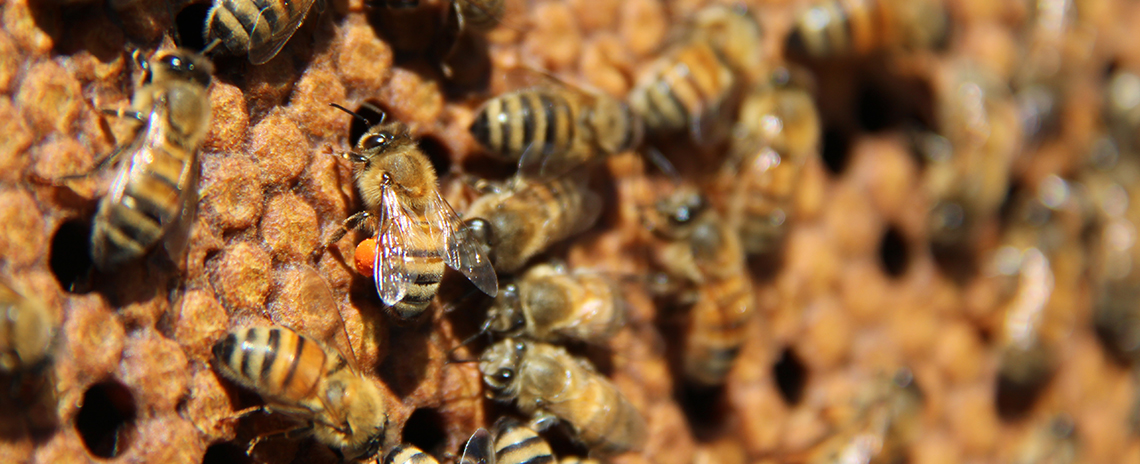
Pollination, the transfer of pollen from the male component of a plant to the female, is arguably the most important ecosystem service. When pollination is successful it results in fertilization and the development of a fruit, nut or seed.
“People should know that one third of the food we eat is related directly to the pollination services of bees,” says Ernesto Guzman, environmental sciences professor and Pinchin Family Chair in Bee Health. “If we don’t keep a healthy, strong abundance of bees, it is going to be difficult to produce these products.”
In Ontario, 32 of our economically important crops are pollinated by bees and other animals. Worldwide the estimated economic value of crops that are reliant on pollination is $690 billion per year.
Here’s a brief glimpse of the foods pollinators help provide:
- Field crops: cucumber, water melon, tomato, pumpkin, squash
- Orchard fruit: apples, peaches, cherries
- Berry crops: blueberries, cranberries, strawberries
- Oilseed crops: canola, soybean, sunflower, alfalfa
- Nuts: cashews, macadamia
- Life necessities: coffee and chocolate
Pollinators also play a key role in all plant life and help support healthy ecosystems. Trees, shrubs and many beautiful flowers rely on pollinators.
Bees, butterflies and wasps, oh my!
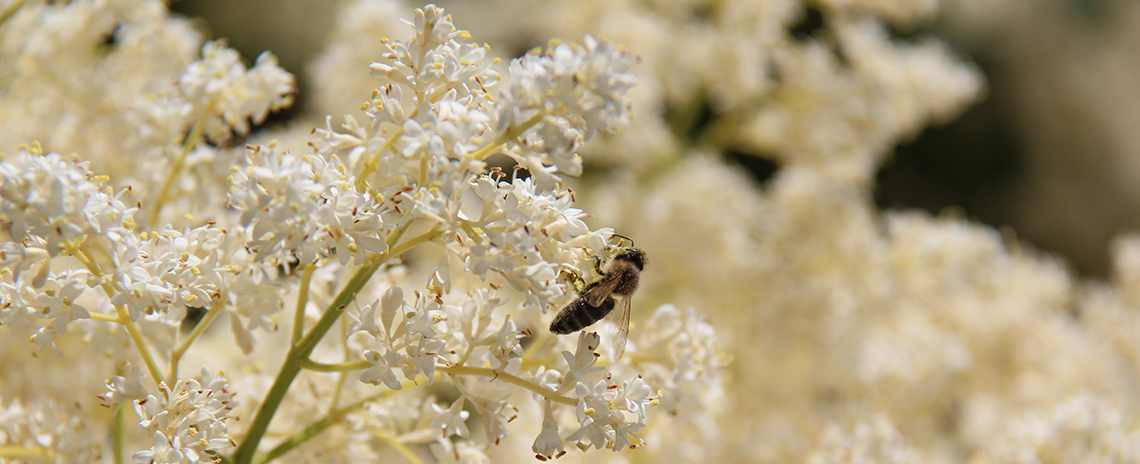
Nigel Raine, environmental sciences professor and Rebanks Family Chair in Pollinator Conservation, explains that the terms honey bee and pollinator are quite often incorrectly used as synonyms. Sure, the honey bee is a pollinator, but there are approximately 420 other bee species found in Ontario that pollinate. Not to mention non-bee pollinators such as flies, butterflies, wasps, beetles, bats and humming birds.
Although honey bees do an adequate job at providing pollination for some systems, it is important to promote biodiversity in agricultural landscapes to ensure all 420+ pollinators have adequate food sources.
For example, a study by researcher Lucas Garibaldi from the National University of Rio Negro showed that increasing the prevalence of wildflower plants to support wild pollinators increased yields of blueberry plants and profit for farmers.
Wild pollinators have a huge impact on our ecosystems and agroecosystems, so it is important to help conserve their habitats. The honey bee can’t pollinate all crops, and some plants, such as squash, rely heavily on pollination by wild bees.
Raine studies all kinds of pollinators that are difficult to research because they are not managed in colonies like honey bees are. Managed pollinators like the honey bee can be moved from their environment easily, but wild pollinators are for the most part in a fixed landscape and deal with issues at a much different spatial and temporal scale.
He also explains that wild pollinators only have a window of a few days or weeks where the females are active and all their reproductive output happens within that time. They can also be very plant specific food wise, unlike the honey bee who is a generalist. This becomes a major problem for wild pollinators who are dealing with habitat loss, pesticides and disease.
Shining a spotlight on all pollinators
Wild pollinators are just as important as the honey bee to our biodiversity, ecosystems and food supply; it’s time for honey bees to share the spotlight. Because so much media and research focus have been on managed bee species, some wild species have suffered.
Raine points to the example of the Rusty-Patched bumble bee (Bombus affinis). In the early 1980s and 1990s, three out of ten bumblebees caught would be the Rusty-Patched.
“We haven’t seen one in Ontario since 2009, so its most likely gone from Canada,” he says. “The big question is, ‘why is it gone?’, when it was once so common. And the answer is we don’t really know.”
Tracking and researching wild pollinators like the Rusty-Patched bumble bee is crucial for crops that rely on these pollinators and for farmers who benefit, with no-cost to them. To avoid future loses, some of the focus must be shifted to wild pollinators.
The who’s who of Ontario bees
It would take some time to learn and identify all 420 species of Ontario bees, but recognizing some of the common ones is a good place to start. Here’s a brief list, provided by Raine, of Ontario’s most common pollinators.
The Western Honey Bee (Apis mellifera):
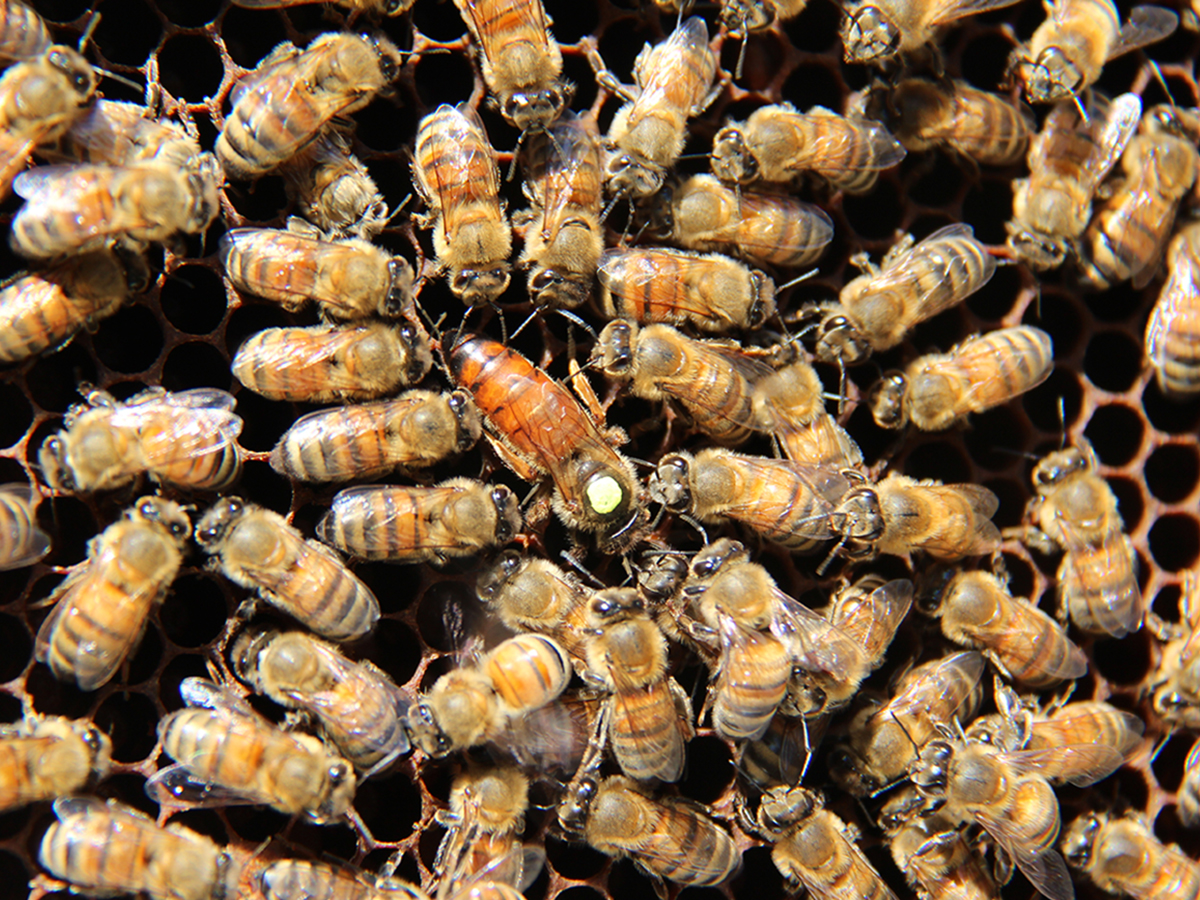
The most well-known bee there is, the Western honey bee is the most common of honey bees. These little guys and gals are the ones that beekeepers manage. The Western honey bee is an extremely social insect and are distinguishable by their fuzzy bodies with black and dull yellow stripes.
Common Eastern Bumble Bee (Bombus impatiens):
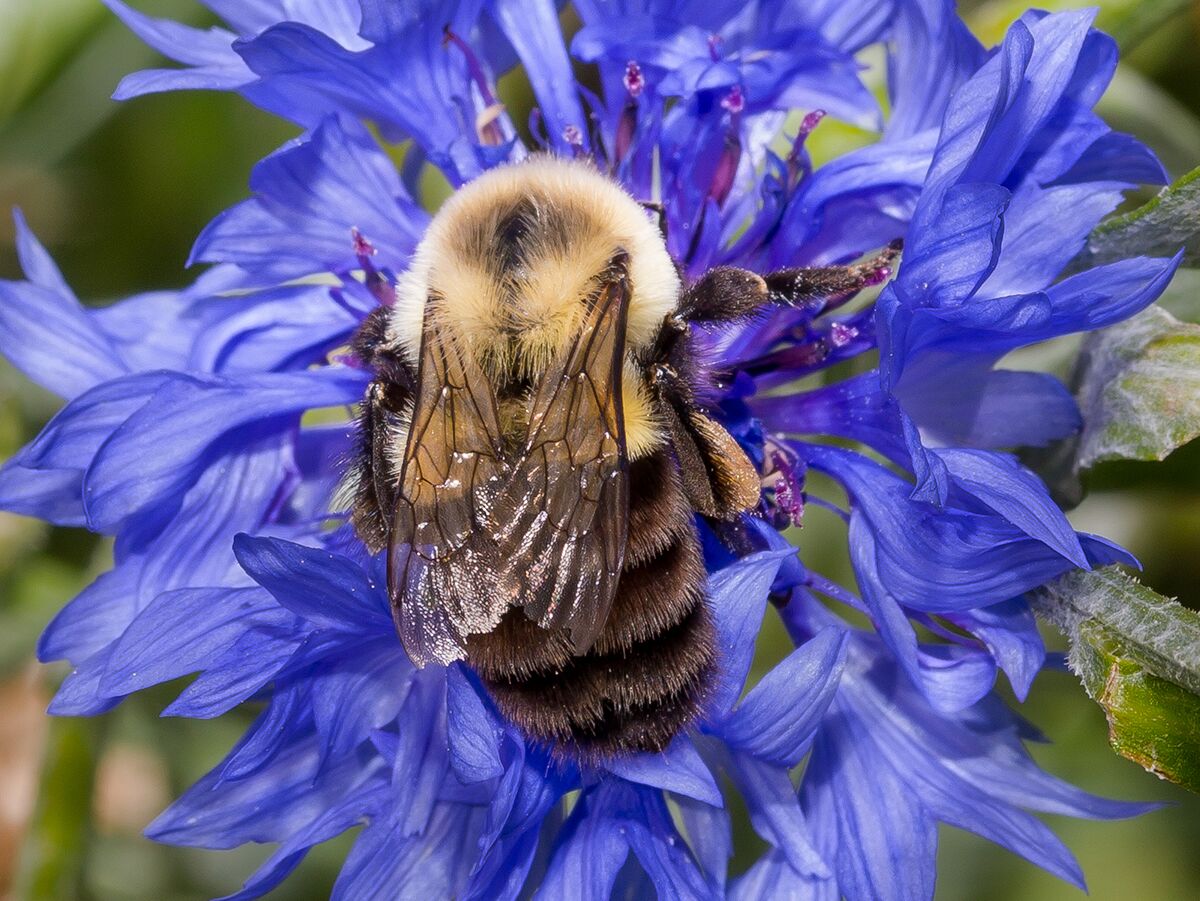
True to its name, this is the most common bumble bee in North America. They are extremely adaptable and make their homes in the country, suburbs and even the city. They are important pollinators in greenhouse production.
Two Spotted Bumble Bee (Bombus bimaculatus):
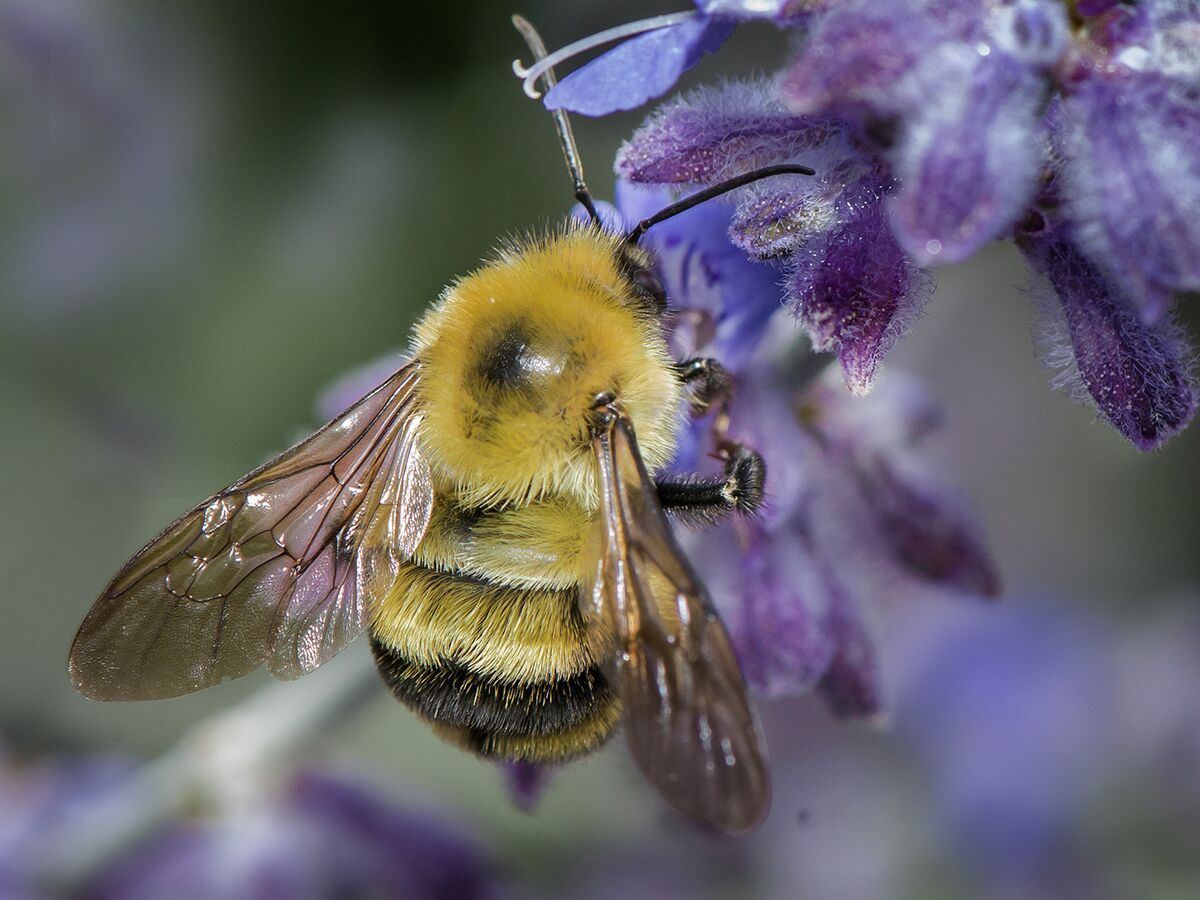
These black bees have golden fur on their back and black on their head and bottom. They are excellent crop pollinators and make their nests above and below ground.
Carpenter Bee (Xylocopa virginica):
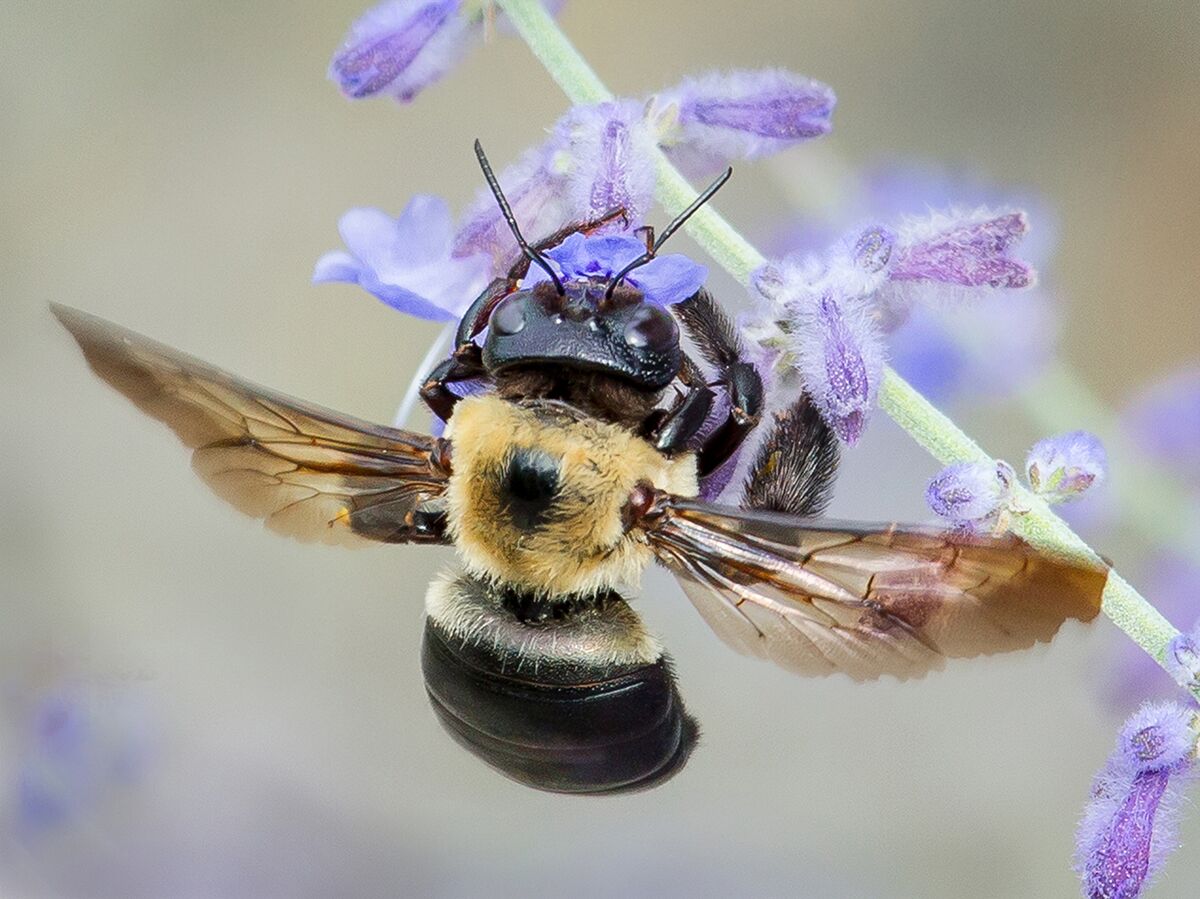
Carpenter bees are well known for being pests because they make their homes in dead wood, including the wood used to contruct homes. They can be often confused with bumble bees, but are distinctive by their shiny black abdomen. They are great pollinators of native plants, gardens and even some crops.
Leafcutter Bee (Megachile xanthosarus):
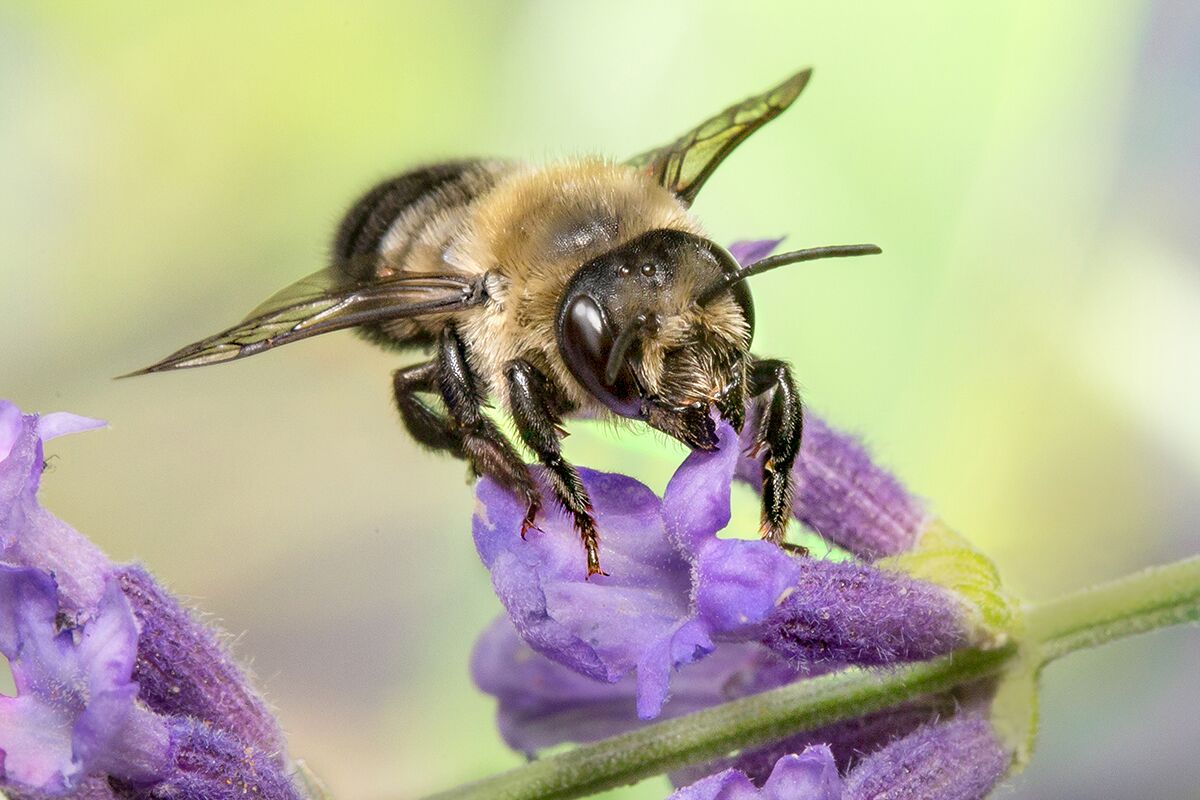
This broad-faced bee is black with yellowish-white striped hairs. They are active during the heat of the summer and make their home in pre-existing cavities lined with pieces of leaf that the female cuts and glues into place. Leafcutter bees are pollinators of legumes, cranberries, blueberries and wildflowers.
Sweat (Halictid) Bees:
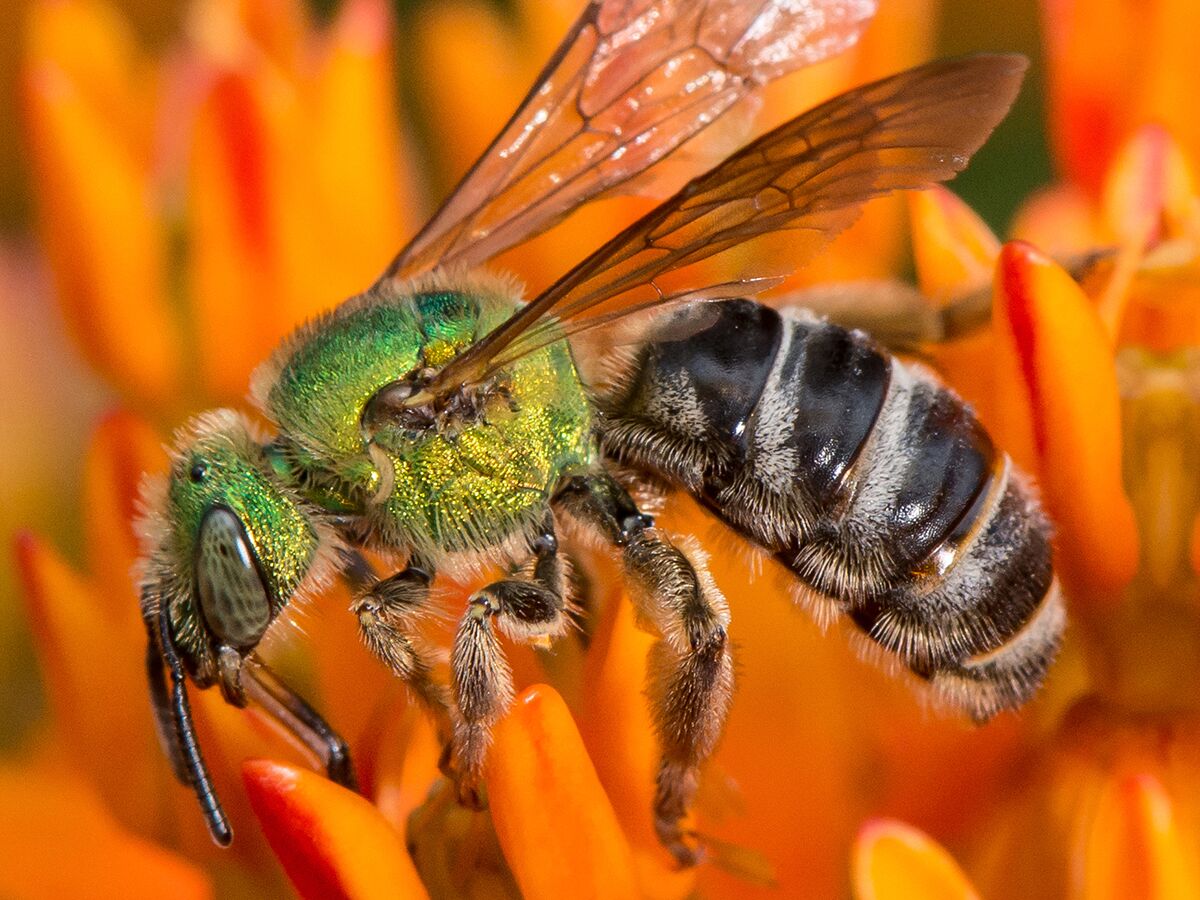
These gorgeous bees don colours of bright green or coppery red with golden white hair. Keeping busy is no “sweat” for these bees as they are active from May to November. They are important pollinators for wildflowers and crops like stone fruit and apples.
Squash Bee (Peponapis pruinosa):
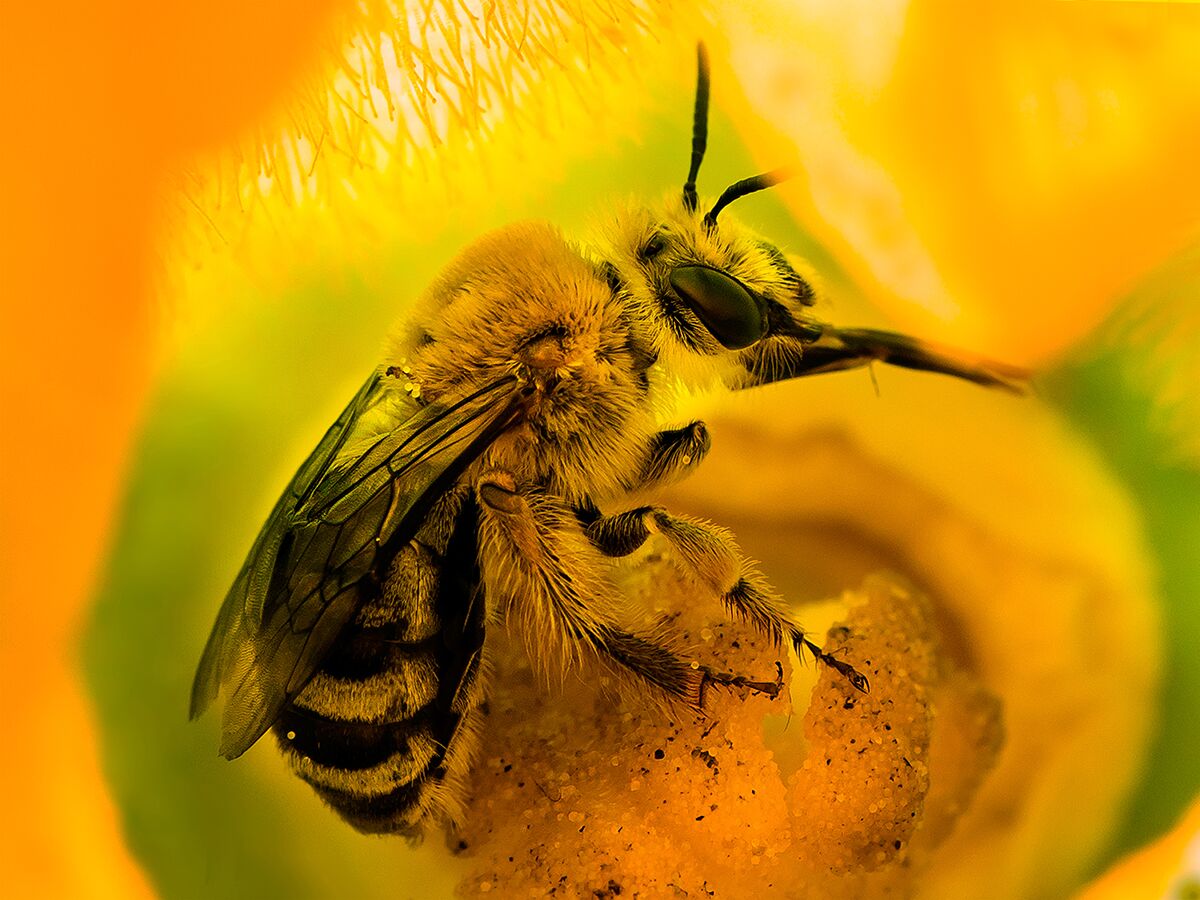
These bees have extremely large eyes that allow them to fly when light levels are low. They are black with long pale golden fur and yellowish brown wings. These bees are early risers and will forage and mate amongst squash flowers before noon, and are a great example of wild pollinators that we rely on. If they are missing from the landscape of pumpkin or squash farms, it is very difficult to get a good yield.
*Photographs by Paula Sharp and Ross Eatman (sharpeatmanguides.com) are subject to registered copyright and may not be copied, distributed or otherwise used for any purpose, absent the express written permission of the photographer.
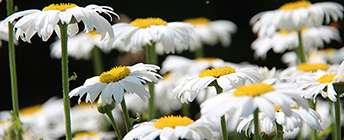 |
Read more:"Helping Ontario's Pollinators: Things you can do"
|
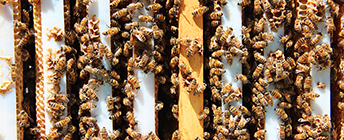 |
Read more:"Buzzing in the Media" |